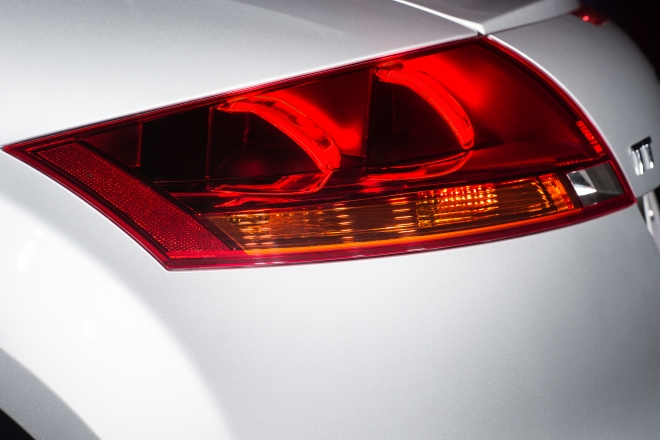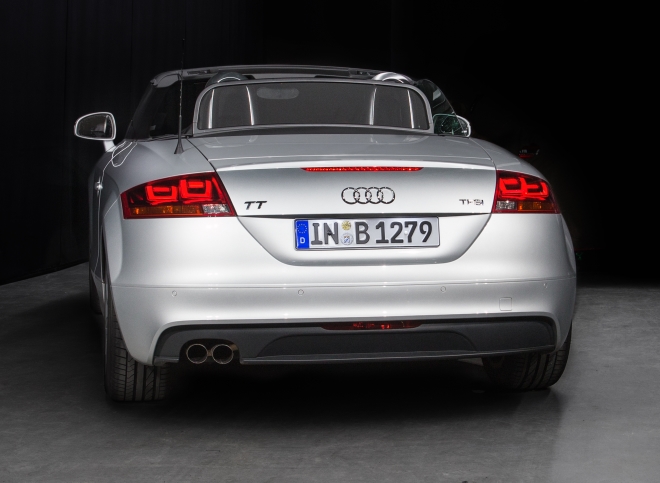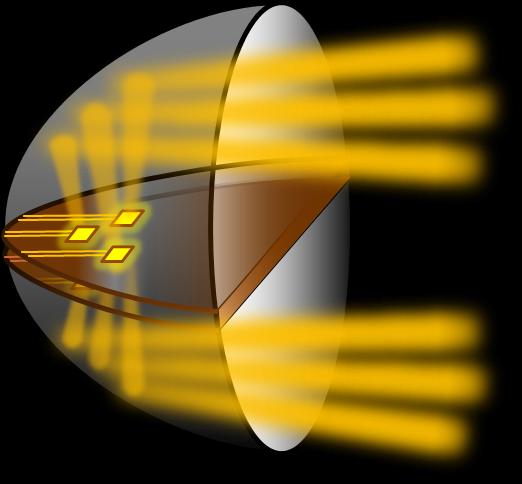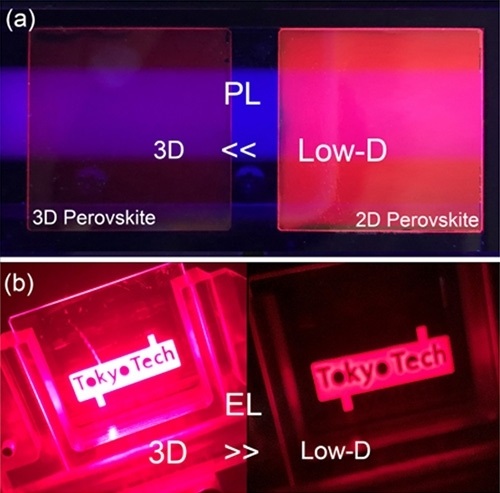July 11, 2013
Audi, Philips, Automotive Lighting, Merck and the University of Cologne announce the successful conclusion of the "OLED 3D" research project promoted by the German Federal Ministry of Education and Research.
Hamburg, Germany – The members of the OLED 3D research consortium presented a world first today: the development of large-area, three-dimensional organic light-emitting diodes (OLEDs) and their use in the rear lighting of a vehicle for the first time. This demonstrates the extent to which this new lighting technology will change the appearance of vehicles in the future.
The three and a half-year project received € 5.7 million in funding from the German Federal Ministry of Education and Research. The consortium was led by Philips (Aachen) and consisted of Audi (Ingolstadt), Automotive Lighting (Reutlingen), Merck (Darmstadt), and the University of Cologne.
The partners aimed to analyze and to improve the technology and the subsequent application of 3D OLEDs in automotive applications throughout the entire supply chain. Together with the Technical University of Darmstadt, Merck developed new, crosslinkable red OLED materials. Thanks to these materials, OLEDs can be produced for the first time in multiple layers on formed glass using wet chemistry. The University of Cologne conducted intensive research on this manufacturing process and demonstrated it on 3D samples.
The quality of the OLED substances significantly impacts the lifetime and performance of OLED applications. The sensitivity and precision of analytical chemistry as well as expertise in producing ultrapure materials are thus indispensable preconditions for the successful application of this technology. Therefore, the project also involved intensive work on the purity of the materials used and their chemical characterization.

The 3D OLEDs used in the rear lights of the Audi TT were produced by Philips. For this purpose, the OLED manufacturing process, which was previously based on 2D glass substrates, had to be adapted to the third dimension. This related not only to the processes and technologies for manufacturing the glass substrates themselves, but also to vacuum-based OLED coating, encapsulation and electrical contacting.
Automotive Lighting developed, realized and tested 3D-supported concepts for the application, mounting and control of large-area, curved OLED components in rear lights. Audi developed an OLED-specific design and integrated the rear lighting into an Audi TT.
The impressive design draft shows the multifaceted possibilities that OLEDs offer in external vehicle lighting. The result creates entirely new pioneering design possibilities for innovative OLED lighting applications in automotive engineering. For example, the OLED-3D consortium has further developed the characteristic rear light design of the Audi TT. Using these ultra-thin, large-area light sources, it has entered the third dimension of space and a totally new dimension of design.















